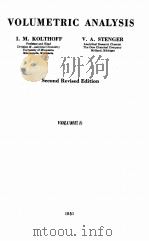《Capital A Critical Analysis of Capitalist Production Volume I》
| 作者 | Karl Marx 编者 |
|---|---|
| 出版 | Foreign Languages Publishing House |
| 参考页数 | 808 |
| 出版时间 | 没有确切时间的资料 目录预览 |
| ISBN号 | 无 — 求助条款 |
| PDF编号 | 819751538(仅供预览,未存储实际文件) |
| 求助格式 | 扫描PDF(若分多册发行,每次仅能受理1册) |
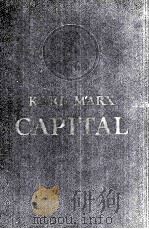
Preface to the English Edition3
PREFACES AND AFTERWORDS BY KARL MARX AND FREDERICK ENGELS TO THE GERMAN AND FRENCH EDITIONS7
Preface to the First German Edition7
Afterword to the Second German Edition12
Preface to the French Edition21
Afterword to the French Edition22
Preface to the Third German Edition23
Preface to the Fourth German Edition26
PART ⅠCOMMODITIES AND MONEY35
CHAPTER Ⅰ- Commodities35
Section 1.-The Two Factors of a Commodity:Use-Value and Value(the Substance of Value and the Magnitude of Value)35
Section 2.-The Two-fold Character of the Labour Embodied in Commodities41
Section 3.-The Form of Value or Exchange-Value47
A.Elementary or Accidental Form of Value48
1.The Two Poles of the Expression of Value:Relative Form and Equivalent Form48
2.The Relative Form of Value49
a.The Nature and Import of this Form49
b.Quantitative Determination of Relative Value53
3.The Equivalent Form of Value55
4.The Elementary Form of Value Considered as a Whole60
B.Total or Expanded Form of Value62
1.The Expanded Relative Form of Value62
2.The Particular Equivalent Form64
3.Defects of the Total or Expanded Form of Value64
C.The General Form of Value65
1.The Altered Character of the Form of Value65
2.The Interdependent Development of the Relative Form of Value,and of the Equivalent Form67
3.Transition from the General Form of Value to the Money-Form69
D.The Money-Form69
Section 4-The Fetishism of Commodities and the Secret thereof71
CHAPTER Ⅱ.-Exchange84
CHAPTER Ⅲ.-Money,or the Circulation of Commodities94
Section 1.-The Measure of Values94
Section 2.-The Medium of Circulation103
a.The Metamorphosis of Commodities103
b.The Currency of Money114
c.Coin and Symbols of Value124
Section 3.-Money130
a.Hoarding130
b.Means of Payment134
c.Universal Money142
PART ⅡTHE TRANSFORMATION OF MONEY INTO CAPITAL146
CHAPTER Ⅳ.-The General Formula for Capital146
CHAPTER Ⅴ.-Contradictions in the General Formula of Capital156
CHAPTER Ⅵ.-The Buying and Selling of Labour-Power167
PART ⅢTHE PRODUCTION OF ABSOLUTE SURPLUS-VALUE177
CHAPTER Ⅶ.-The Labour-Process and the Process of Producing Surplus-Value177
Section 1.-The Labour-Process or the Production of Use-Values177
Section 2.-The Production of Surplus-Value186
CHAPTER Ⅷ.-Constant Capital and Variable Capital199
CHAPTER Ⅸ.-The Rate of Surplus-Value212
Section 1.-The Degree of Exploitation of Labour-Power212
Section 2.-The Representation of the Components of the Value of the Product by Corresponding Proportional Parts of the Product Itself220
Section 3.-SeniorsLast Hour224
Section 4.-Surplus-Produce230
CHAPTER Ⅹ.-The Working-Day231
Section 1.-The Limits of the Working-Day231
Section 2.-The Greed for Surplus-LabourManufacturer and Boyard235
Section 3.-Branches of English Industry without Legal Limits to Exploitation243
Section 4.-Day and Night WorkThe Relay System256
Section 5.-The Struggle for a Normal Working-DayCompulsory Laws for the Extension of the Working-Day from the Middle of the 14th to the End of the 17th Century264
Section 6.-The Struggle for the Normal Working-DayCompulsory Limitation by Law of the Working-TimeThe English Factory Acts,1833 to 1864278
Section 7.-The Struggle for the Normal Working-DayRe-action of the English Factory Acts on Other Countries298
CHAPTER Ⅺ.-Rate and Mass of Surplus-Value303
PART ⅣPRODUCTION OF RELATIVE SURPLUS-VALUE312
CHAPTER Ⅻ.-The Concept of Relative Surplus-Value312
CHAPTER ⅩⅢ.-Co-operation322
CHAPTER ⅩⅣ.-Division of Labour and Manufacture336
Section 1.-Two-fold Origin of Manufacture336
Section 2.-The Detail Labourer and His Implements339
Section 3.-The Two Fundamental Forms of Manufacture:Heterogeneous Manufacture,Serial Manufacture342
Section 4.-Division of Labour in Manufacture,and Division of Labour in Society350
Section 5.-The Capitalistic Character of Manufacture359
CHAPTER ⅩⅤ.-Machinery and Modern Industry371
Section 1.-The Development of Machinery371
Section 2.-The Value Transferred by Machinery to the Product386
Section 3.-The Proximate Effects of Machinery on the Workman394
a.Appropriation of Supplementary Labour-Power by CapitalThe Employment of Women and Children394
b.Prolongation of the Working-Day403
c.Intensification of Labour409
Section 4.-The Factory418
Section 5.-The Strife Between Workman and Machine427
Section 6.-The Theory of Compensation as Regards the Work-people Displaced by Machinery438
Section 7.-Repulsion and Attraction of Workpeople by the Factory SystemCrises in the Cotton Trade447
Section 8.-Revolution Effected in Manufacture,Handicrafts,and Domestic Industry by Modern Industry459
a.Overthrow of Co-operation Based on Handicraft and on the Division of Labour459
b.Reaction of the Factory System on Manufacture and Domestic Industries461
c.Modern Manufacture462
d.Modern Domestic Industry466
e.Passage of Modern Manufacture,and Domestic Industry into Modern Mechanical IndustryThe Hastening of This Revolution by the Application of the Factory Acts to Those Industries470
Section 9.-The Factory ActsSanitary and Educational Clauses of the SameTheir General Extension in England480
Section 10.-Modern Industry and Agriculture504
PART ⅤTHE PRODUCTION OF ABSOLUTE AND OF RELATIVE SURPLUS-VALUE508
CHAPTER ⅩⅥ.-Absolute and Relative Surplus-Value508
CHAPTER ⅩⅦ.-Changes of Magnitude in the Price of Labour-Power and in Surplus-Value519
Ⅰ.Length of the Working-Day and Intensity of Labour ConstantProductiveness of Labour Variable520
Ⅱ.Working-Day ConstantProductiveness of Labour ConstantIntensity of Labour Variable524
Ⅲ.Productiveness and Intensity of Labour ConstantLength of the Working-Day Variable526
Ⅳ.Simultaneous Variations in the Duration,Productiveness,and Intensity of Labour527
(1) Diminishing Productiveness of Labour with a Simultaneous Lengthening of the Working-Day528
(2) Increasing Intensity and Productiveness of Labour with Simultaneous Shortening of the Working-Day530
CHAPTER ⅩⅧ.-Various Formul? for the Rate of Surplus-Value531
PART ⅥWAGES535
CHAPTER ⅩⅨ.-The Transformation of the Value(and Respectively the Price) of Labour-Power into Wages535
CHAPTER ⅩⅩ.-Time-Wages543
CHAPTER ⅩⅪ.-Piece-Wages551
CHAPTER ⅩⅫ.-National Differences of Wages559
PART ⅦTHE ACCUMULATION OF CAPITAL564
CHAPTER ⅩⅩⅢ.-Simple Reproduction566
CHAPTER ⅩⅩⅣ.-Conversion of Surplus-Value into Capital579
Section 1.-Capitalist Production on a Progressively Increasing ScaleTransition of the Laws of Property that Characterise Production of Commodities into Laws of Capitalist Appropriation579
Section 2.-Erroneous Conception,by Political Economy,of Reproduction on a Progressively Increasing Scale588
Section 3.-Separation of Surplus-Value into Capital and RevenueThe Abstinence Theory591
Section 4.-Circumstances that,Independently of the Proportional Division of Surplus-Value into Capital and Revenue,Determine the Amount of AccumulationDegree of Exploitation of Labour-PowerProductivity of LabourGrowing Difference in Amount Between Capital Employed and Capital ConsumedMagnitude of Capital Advanced599
Section 5.-The So-Called Labour-Fund609
CHAPTER ⅩⅩⅤ.-The General Law of Capitalist Accumulation612
Section 1.-The Increased Demand for Labour-Power that Accompanies Accumulation,the Composition of Capital Remaining the Same612
Section 2.-Relative Diminution of the Variable Part of Capital Simultaneously with the Progress of Accumulation and of the Concentration that Accompanies It621
Section 3.-Progressive Production of a Relative Surplus-Population or Industrial Reserve Army628
Section 4.-Different Forms of the Relative Surplus-PopulationThe General Law of Capitalistic Accumulation640
Section 5.-Illustrations of the General Law of Capitalist Accumulation648
a.England from 1846-1866648
b.The Badly Paid Strata of the British Industrial Class654
c.The Nomad Population663
d.Effect of Crises on the Best Paid Part of the Working-Class667
e.The British Agricultural Proletariat673
f.Ireland697
PART ⅧTHE SO-CALLED PRIMITIVE ACCUMULATION713
CHAPTER ⅩⅩⅥ.-The Secret of Primitive Accumulation713
CHAPTER ⅩⅩⅦ.-Expropriation of the Agricultural Population from the Land717
CHAPTER ⅩⅩⅧ.-Bloody Legislation against the Expropriated,from the End of the 15th CenturyForcing down of Wages by Acts of Parliament734
CHAPTER ⅩⅩⅨ.-Genesis of the Capitalist Farmer742
CHAPTER ⅩⅩⅩ.-Reaction of the Agricultural Revolution on IndustryCreation of the Home-Market for Industrial Capital745
CHAPTER ⅩⅩⅪ.-Genesis of the Industrial Capitalist750
CHAPTER ⅩⅩⅫ.-Historical Tendency of Capitalist Accumulation761
CHAPTER ⅩⅩⅩⅢ.-The Modern Theory of Colonisation765
INDEXES775
INDEX OF AUTHORITIES775
NAME INDEX797
《Capital A Critical Analysis of Capitalist Production Volume I》由于是年代较久的资料都绝版了,几乎不可能购买到实物。如果大家为了学习确实需要,可向博主求助其电子版PDF文件(由Karl Marx Foreign Languages Publishing House 出版的版本) 。对合法合规的求助,我会当即受理并将下载地址发送给你。
高度相关资料
-
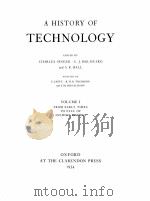
- A HISTORY OF TECHNOLOGY VOLUME I
- 1954 AT THE CLARENDON PRESS
-
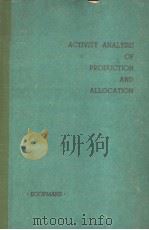
- ACTIVITY ANALYSIS OF PRODUCTION AND ALLOCATION PROCEEDINGS OF A CONFERENCE
- JOHN WILEY AND SONS,INC.
-

- A CRITICAL BIBLIOGARPHY OF TWENTIETH-CENTURY LITERATURE STUDIES VOLUME I
- 1998 MPG BOOK DIVISION
-

- CRITICAL ANALYSIS OF FICTION
- 1992 AMSTERDAM ATLANTA
-

- CAPITAL A CRITICAL ANALYSIS OF CAPITALIST PRODUCTION LONDON 1887
- 1990 DIETZ VERLAG BERLIN
-

- CAPITAL A CRITICAL ANALYSIS OF CAPITALIST PRODUCTION LONDON 1887
- 1990 DIETZ VERLAG BERLIN
-

- CAPITAL A CRITIQUE OF POLITICAL ECONOMY VOLUME 3
- 1909 CHARLES H. KERR AND COMPANY
-
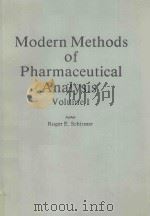
- MODERN METHODS OF PHARMACEUTICAL ANALYSIS VOLUME I
- 1982 CRC PRESS INC
-

- MODERN METHODS OF PLANT ANALYSIS VOLUME I
- 1956 MIT 215 ABBILDUNGEN
-

- DIONYSIUS OF HALICARNASSUS CRITICAL ESSAYS VOLUME I
- 1974 HARVARD UNIVERSITY PRESS
-
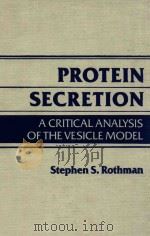
- protein secertion a critical analysis of the vesicle model
- 1985 john wiley & sons
-

- MONEY CAPITAL IN THE THEORY OF THE FIRM A PRELIMINARY ANALYSIS
- 1987 CAMBRIDGE UNIVERSITY PRESS
-
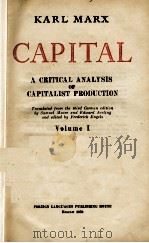
- CAPITAL A CRITICAL ANALYSIS OF CAPITALIST PRODUCTION VOLUME I
- 1959 FOREIGN LANGUAGES PUBLISHING HOUSE
提示:百度云已更名为百度网盘(百度盘),天翼云盘、微盘下载地址……暂未提供。➥ PDF文字可复制化或转WORD

